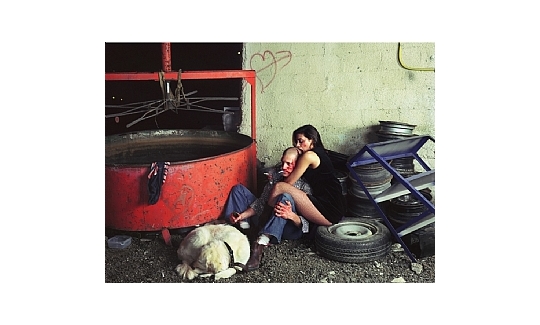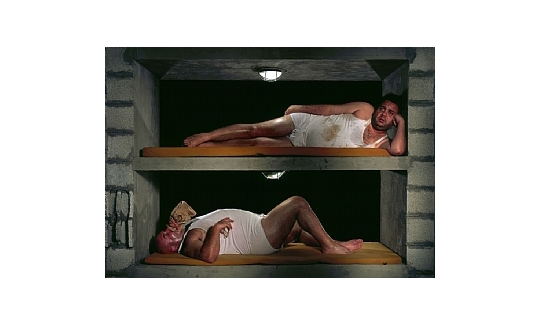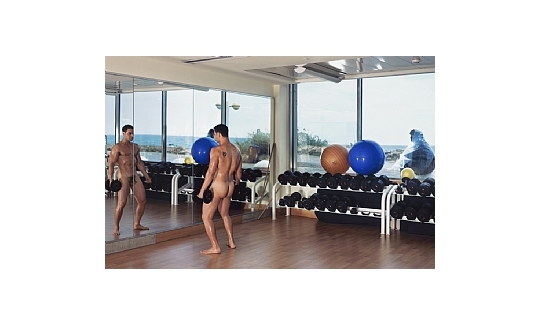Curator: Yehudit Matzkel
Anan Tzuckerman's exhibition centers upon a discussion of male identity among young Israelis. The exhibition includes five autonomous works, which together form one narrative entity. Tzuckerman acts as the director and producer of large-scale "cinematic" images which dramatically illuminate male figures in carefully staged scenes. At first glance, his works are reminiscent of photographs by the Canadian artist Jeff Wall and by the American artist Cindy Sherman. This affinity is evident in the attention to staged details like makeup, hair, dress, props, lighting and the choice of location; nevertheless, Tzuckerman's work is distinguished by an emphasis on the "pathological" aspects of image consumption in contemporary mass culture.
Tzuckerman's works portray the male subject in a ridiculous light, and look upon images of masculinity with a self-humoring gaze. Tzuckerman describes the fantasy of maleness and the glorification of the body in contemporary consumer culture as: "a ritual of auto-eroticism, which contains an act of self-castration." The work Corpse(from the series "The Project of Eliezer Blum"), in which the artist photographed himself as an abandoned corpse lying in the bushes, seems like a crucial image for any reading of Tzuckerman's works. "The body contains the gaze of Tzuckerman the photographer/man looking at Tzuckerman as an image of a man," the artist explains. Indeed, it seems as if this self-portrait as a man's corpse, devoid of any signifier of masculinity, may symbolically delineate the death of the male and of the concept of "masculinity."
In general, Tzuckerman's works unfold on two different levels. The first level depicts an image of castrated masculinity, withdrawn and overcome by existential angst - a masculinity that may have already lost its place as a signifier of power in contemporary culture. The second level is related to the discourse about the status and significance of the photographic image. According to Tzuckerman, "Corpse is a photograph that bespeaks the demise of the medium. The appearance of the photographed image is not an illusion, but the thing itself." It seems like contemporary consumer culture, with its flood of staged imagery, destabilizes the status of photography as an artistic medium - hence the doubtful examination of its very nature. This layered tension between real, charged images and questions about the very validity of the photographic act endows these works with an unusual, provocative and perturbing character.



